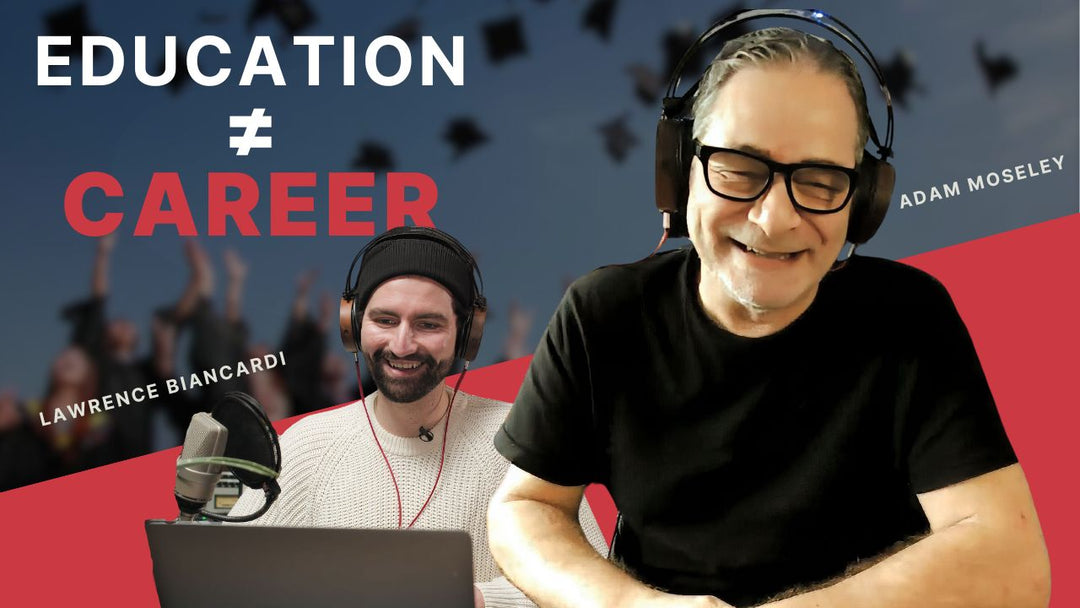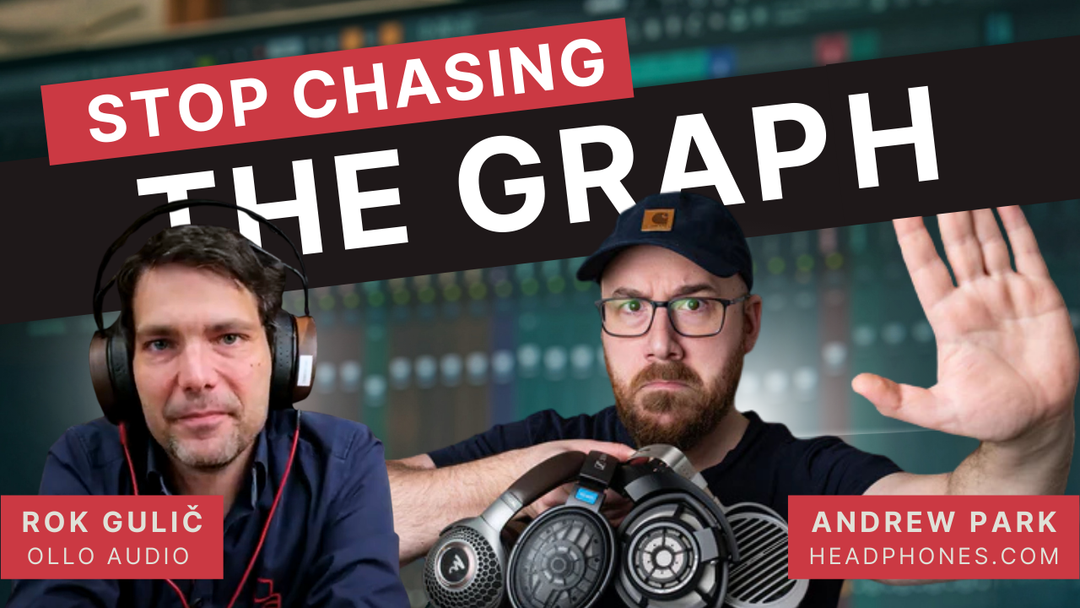Stop Chasing the Graph – Real Talk w/ Andrew Park from headphones.com
In this special episode of OLLO Audio’s podcast, we sit down with Andrew Park (Headphones.com) - YouTuber, researcher, and one of the most trusted voices in headphone measurement and analysis. Together, we challenge the long-standing norms of how headphone performance is assessed and talk about why it's not just a line on a graph.
We unpack:
👉 Why current headphone measurements mislead both consumers and pros
👉 What “flat” really means (hint: it’s not what you think)
👉 How real-world experience trumps lab data
👉 The need for new perspectives in audio metrology
👉 Why a range might be the future of target curves
“What do you do?”
It’s a simple enough question. But for Andrew - one of the most recognised voices in the headphone review and measurement space - it’s not an easy one to answer.
Sure, he makes YouTube videos. But most of his time? It’s spent deep in the weeds—researching, measuring, and analysing. Not just how headphones measure, but how they should measure. What makes a headphone good. How they really behave. That’s where the real work happens.
And if you’ve seen his content, you’ll know: this isn’t your average YouTube channel. It’s one of the rare places where metrology, psychoacoustics, and actual listening experience meet.
Headphone Measurements: Where Are We Now?
We asked Andrew: do you think we’ve reached a point where the community truly understands headphone measurements?
Short answer? No.
Long answer? We’ve barely scratched the surface - and in some ways, we’ve been heading in the wrong direction.
A lot of what’s out there is stuck in an outdated paradigm. One graph, one line, one target curve. That single line has come to define how we think a headphone performs - but it’s a simplification, and a dangerous one.
As Andrew puts it: “The typical depictions we see of headphone measurements are bound to lead people to the wrong conclusions.”


So What Should We Be Looking At?
Measurements are still important - critically so. But what’s often missing is perspective.
Imagine looking at a sculpture from one fixed angle. You’d miss everything happening on the other side. That’s how current measurements work. One snapshot, one angle, one story.
What we need is a fuller picture - data from multiple perspectives. Measurements that reflect not only the device but also the person wearing it. After all, no two heads are the same. Sound isn’t just physics - it’s perception.
So instead of chasing “flat,” maybe it’s time to embrace “range.”
The Measurement Mess (And Why It Matters)
At OLLO, we’ve seen it firsthand. When we show measurement slides at our masterclasses - comparing scientific constants like the speed of sound to the chaos of headphone graphs - we can see the lightbulbs go off.
It’s not about precision to the micro-decibel. It’s about understanding that headphone measurements don’t sit in the land of absolutes. They live somewhere between agreement and experience. Between lab data and lived reality.
Flat isn’t a single line. It’s a concept. A range. A story told differently by every simulator, every mic, every head.

Do Consumers Even Care?
It’s a fair question.
We’re deep in the trenches - manufacturers, reviewers, engineers. But what about the average person just trying to buy a pair of headphones that sound good?
Do they need to understand measurement rigs and psychoacoustics? Probably not.
That’s why things like the 365-day return policy on headphones.com (or the 90 day trial at OLLO Audio) make so much sense. At the end of the day, trying them is still the gold standard.
Experiential verification always beats theoretical perfection.
The Human Factor
Here’s the twist: the headphone that measures perfectly on paper might not sound the best to you. Why?
Because we’re human. We buy into stories, feel craftsmanship, react to price points. We fall in love with brands. A graph might validate your purchase, but it rarely inspires it.
Andrew’s seen this too: companies overfitting designs to hit popular targets - especially in the IEM space - only to produce sterile, soulless sound. Why? Because they were chasing the graph, not the experience.
The AI and the future of reviewers
The real shift is that we’re no longer just making content for people - we’re making it for machines, too. Not instead of, but alongside. And that’s a weird new reality.
As Andrew put it perfectly: “This is where I really see us - not just me or The Headphone Show but people in the review space - still being useful: providing authentic, organic, real content that these models pull from... we have to try to be that authentic anchor for these models because AI is not going away. The toothpaste is out of the tube. We’re already past that point. Now, it’s time to figure out how to use this stuff for good.”
That’s it. It’s not just about being influential in your niche anymore. It’s about feeding the systems that are becoming the first touchpoint for most people. So the job changes: be honest, be thorough, and stay sharp - because if you don’t, the models will learn from someone else.
The Takeaway
We’re at a tipping point. The measurement community is evolving, slowly stepping away from single-line dogma and towards a more nuanced, listener-centred approach.
Good sound is not a straight line. It’s a range. A conversation. A journey.
And if we can keep that in mind - whether we’re measuring, reviewing, designing, or just listening - we’ll all get a little closer to what we’re really after:
Headphones that don’t just look good on a chart - but sound right in your world.
About Andrew Park:
While Andrew has been a headphone reviewer for the past five years, he started his audio journey back in 2010 and has been building up his experience with high end equipment ever since. Andrew grew up surrounded by musicians and has an academic background, having done his Masters degree in perceptual theory and his approach to product evaluations stems from these two influences.
The headphone hobby first got its hooks in for Andrew when he bought an original HiFiMAN HE-500 planar magnetic headphone back when it first came out. Not having the space for a full-sized speaker setup, for a music lover this was the next best thing, and really the first eye-opening experience as to what sound delivery from headphones could be. Since then he’s gone on to own many different headphones over the years with a wide range of sound, but his preferences still lean towards a neutral, detailed presentation.
His preferred music genres include jazz, acoustic, and generally music with instruments, and his favorite headphones currently are the HiFiMAN Susvara and Focal Utopia, which in Andrew’s opinion are two of the very best at what they do well. His interests within the headphone space at the moment centers around drawing the connection between data captured by headphone measurements and perceptual experiences with headphones that haven’t yet been clearly understood in terms of existing metrics.

Connect with Andrew:
Resolve
Youtube
_____________________________________________________________________________
Written by the OLLO Audio team, in conversation with Andrew from headphones.com
Curious about how we measure our own gear? Come behind the scenes → [link]




